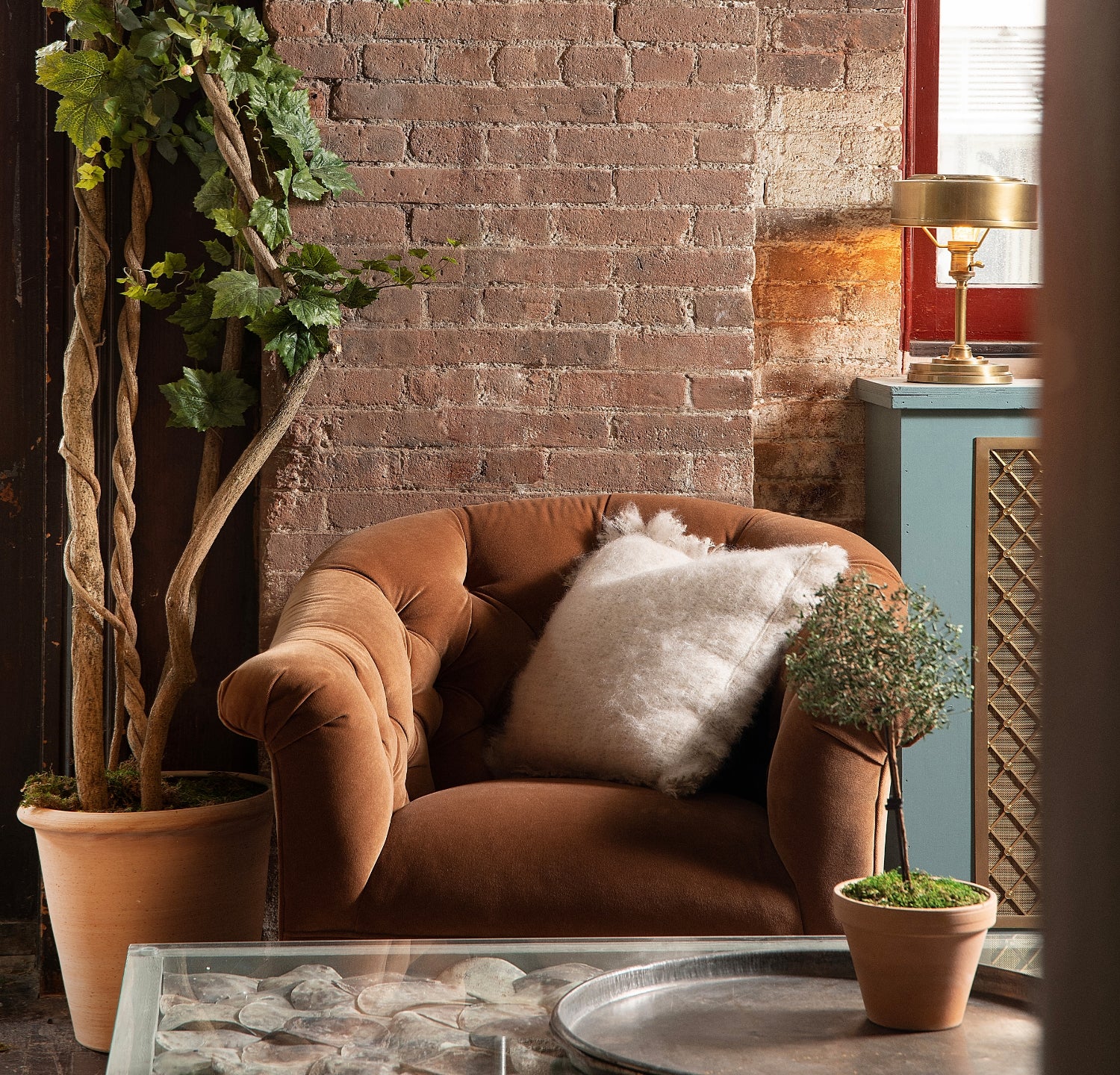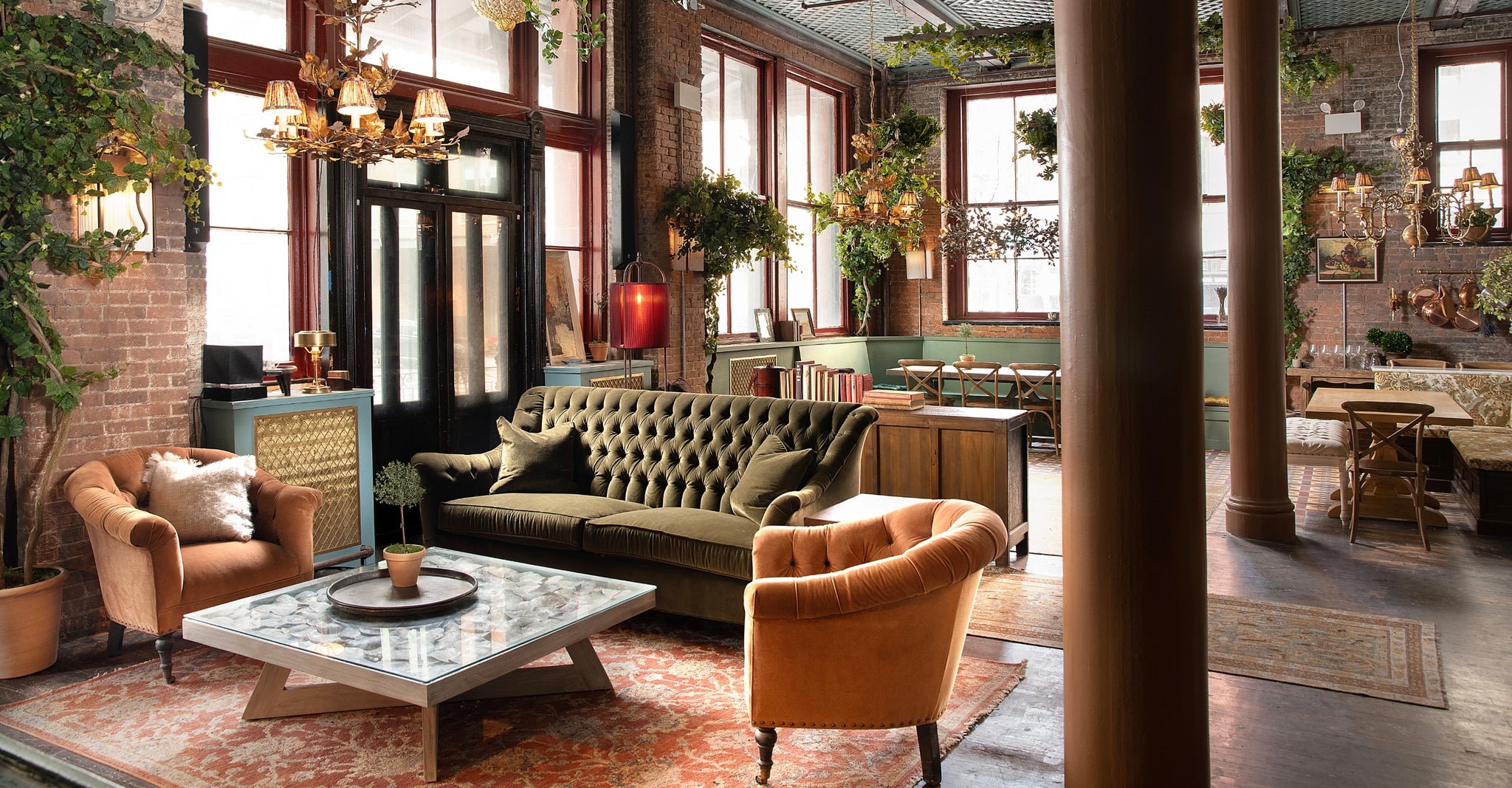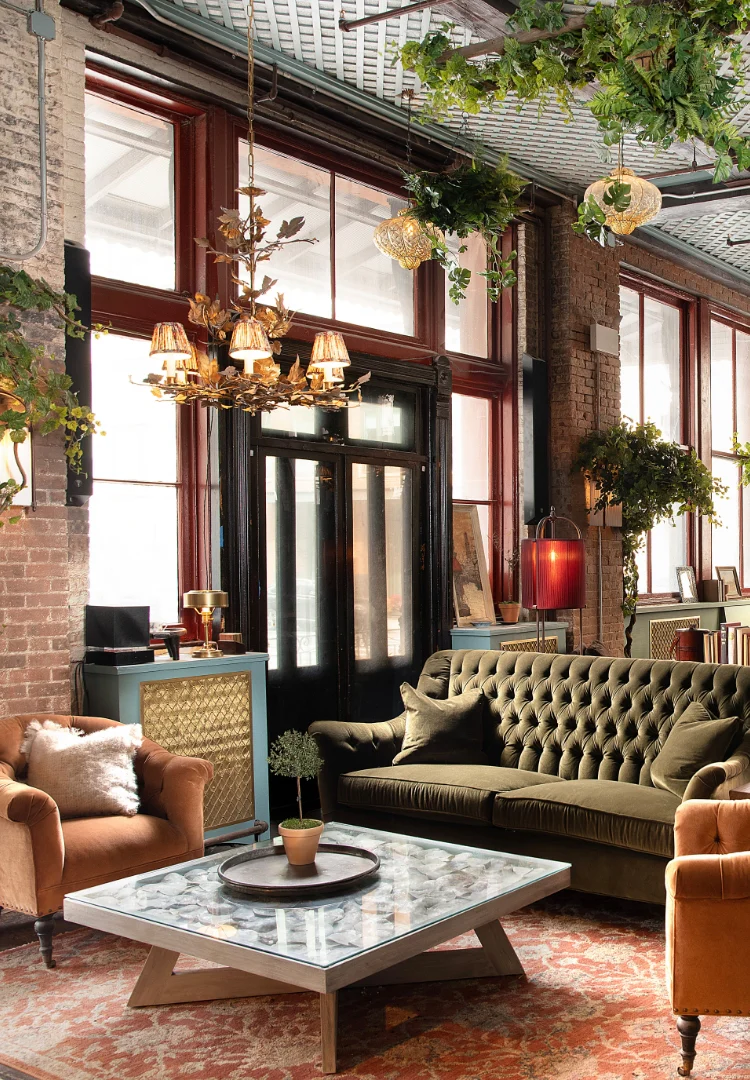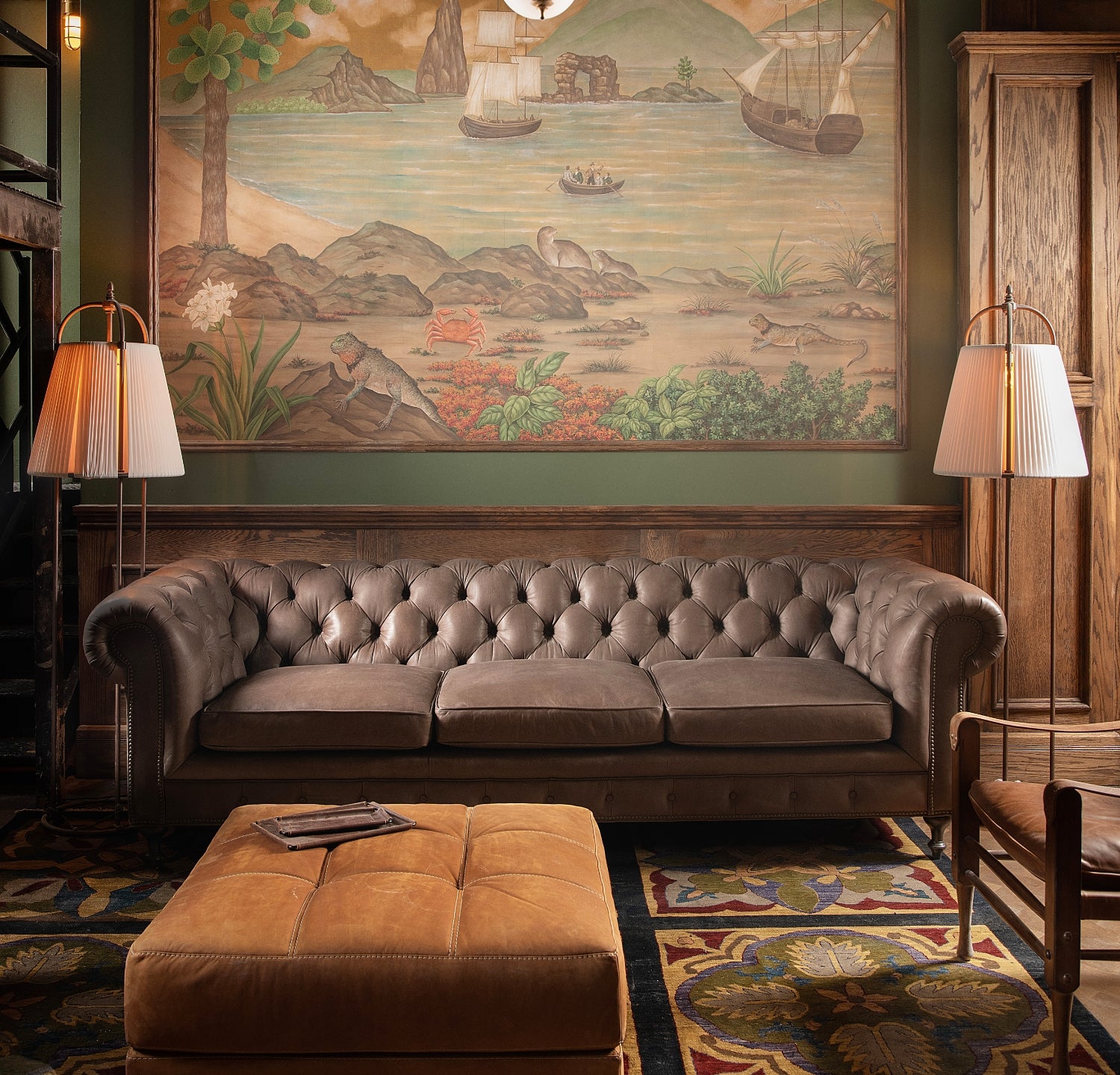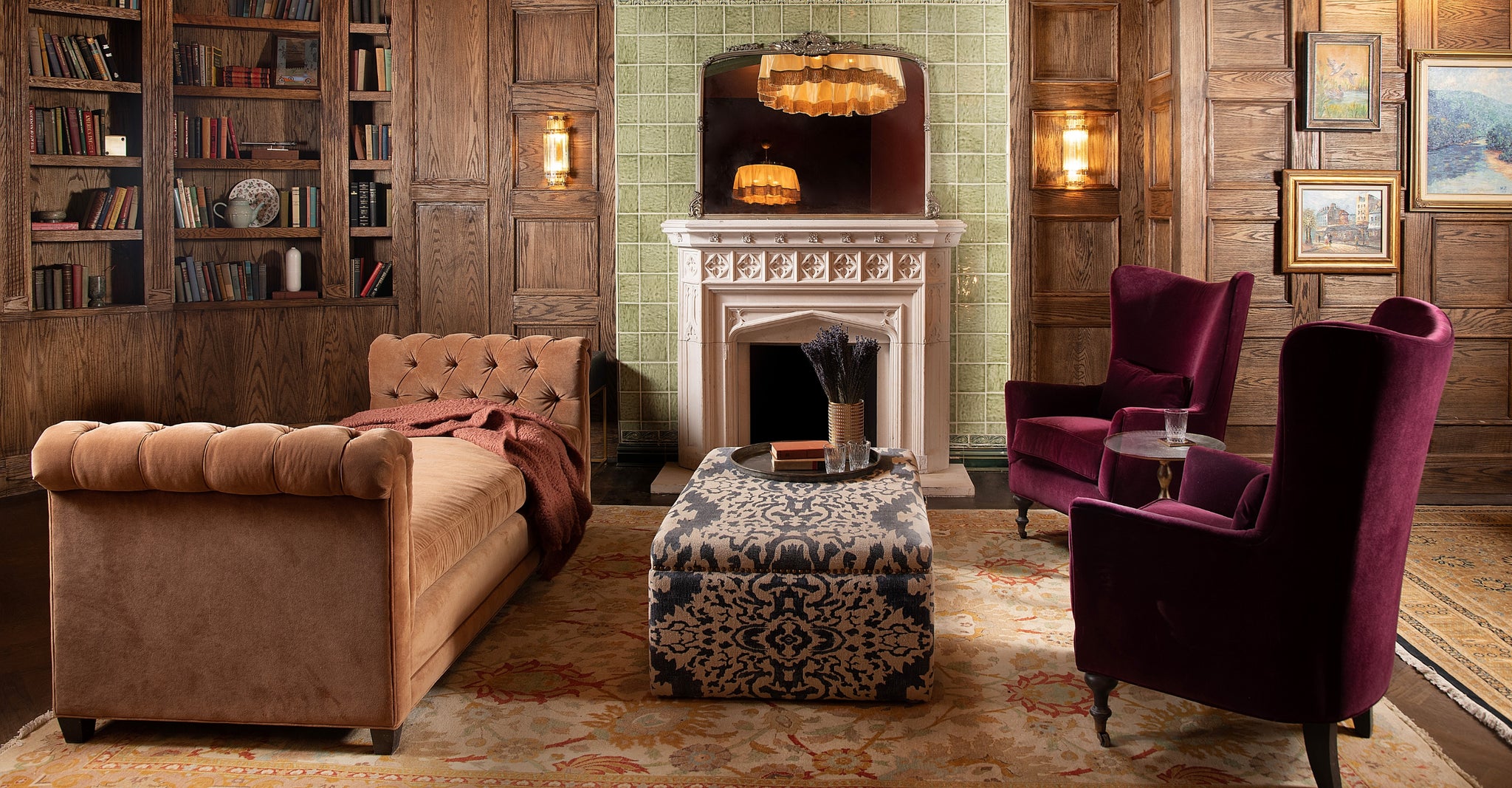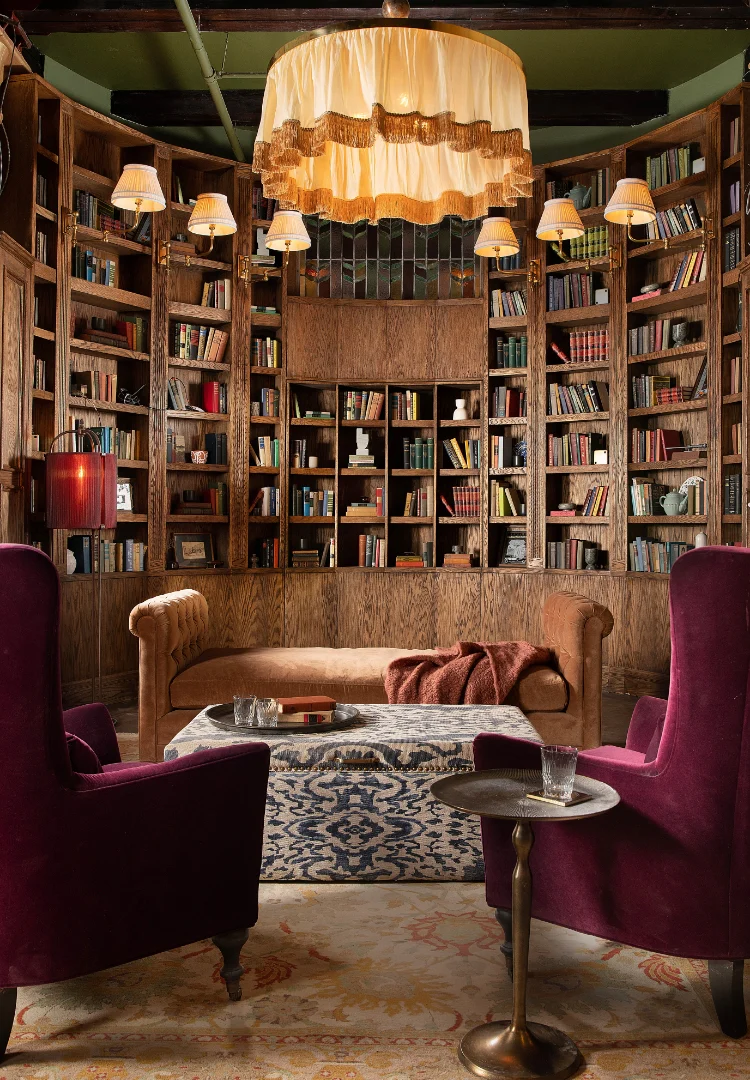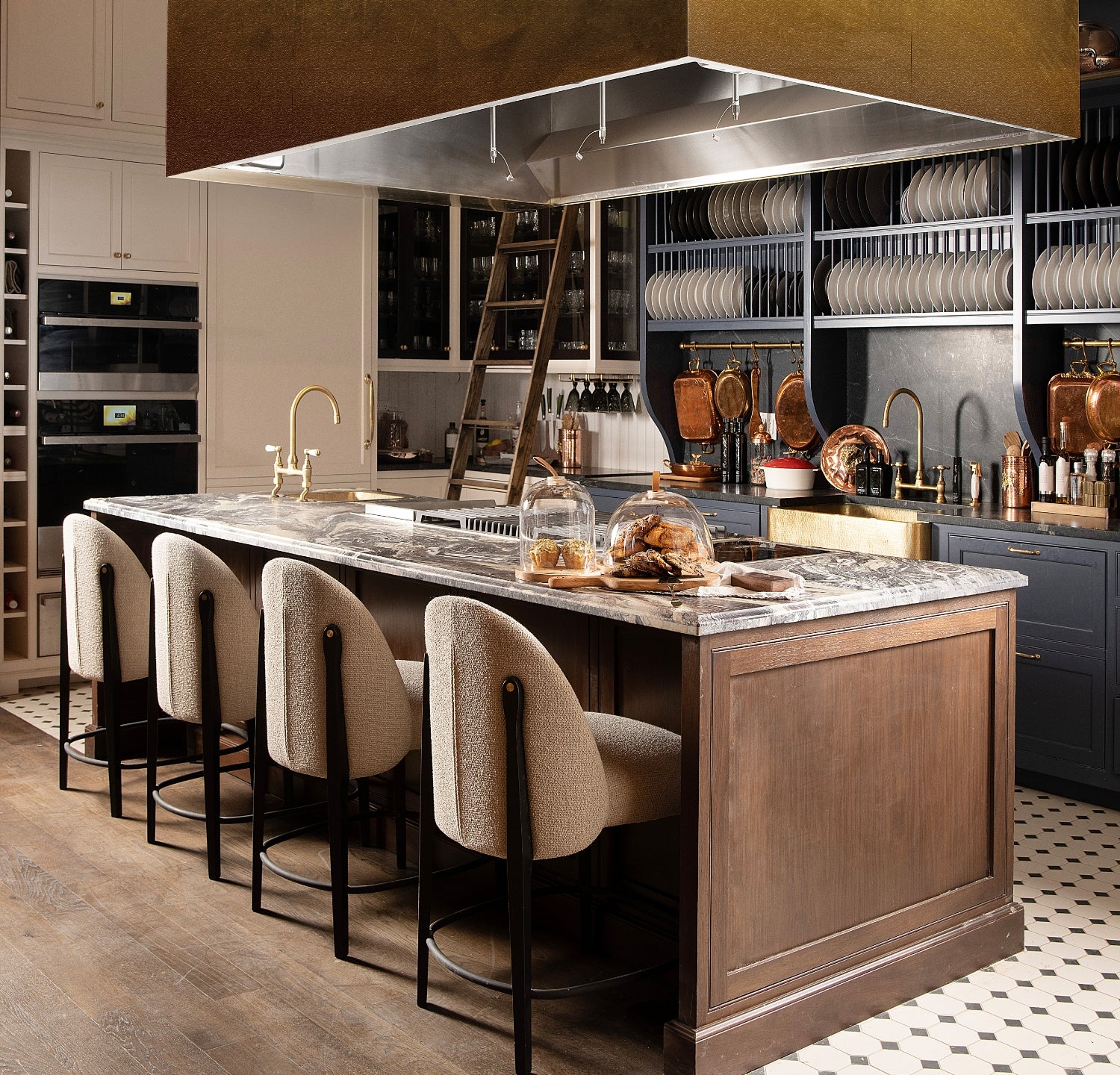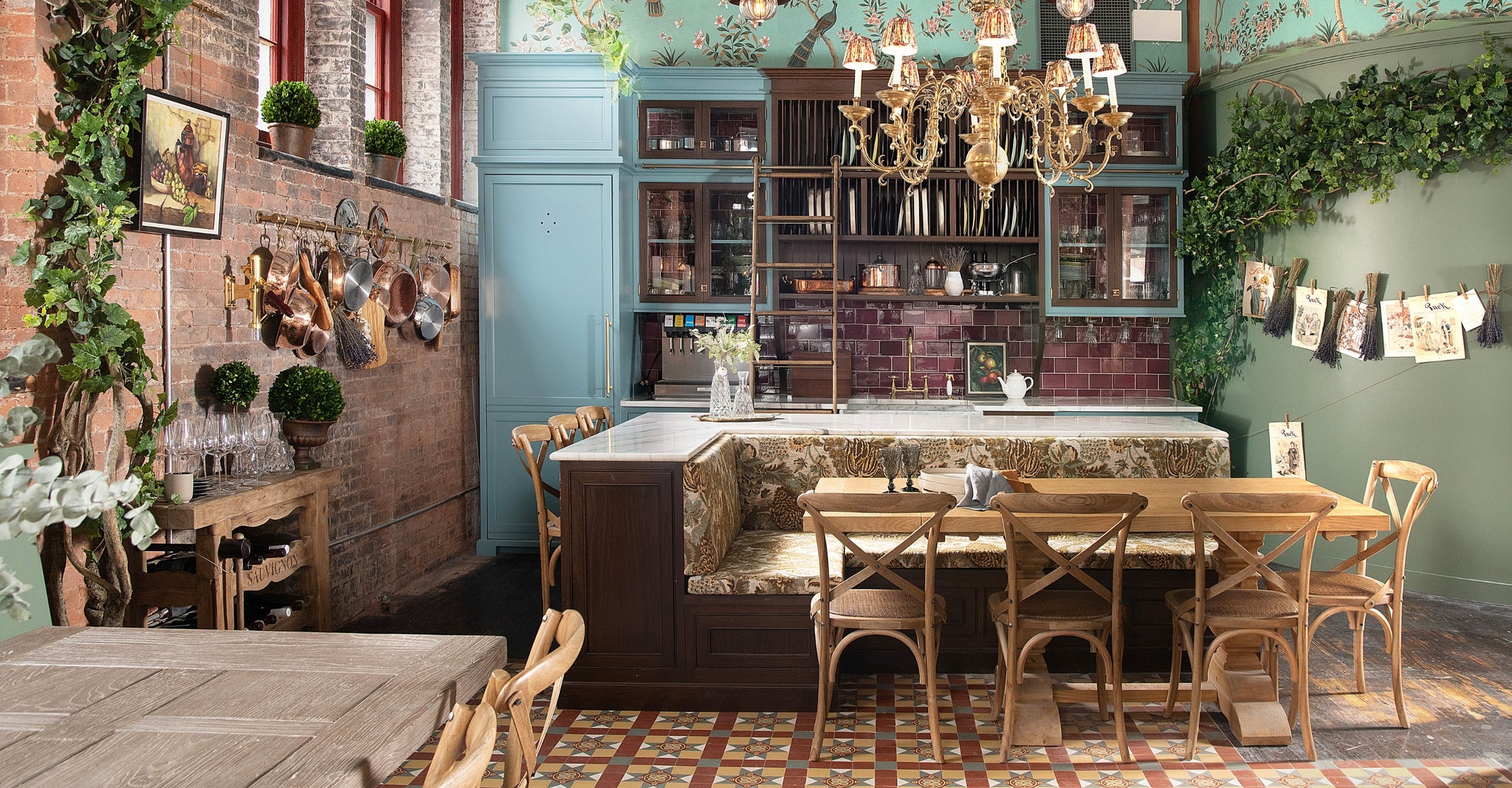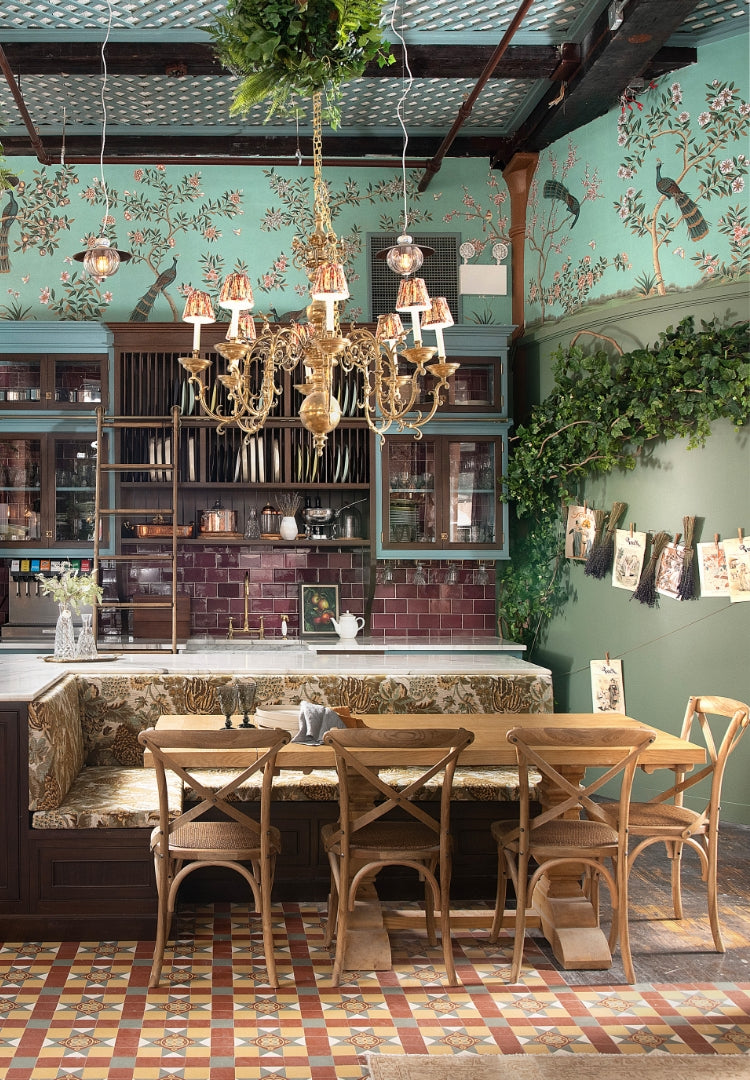The Maxwell Design Team partnered with Arhaus to create custom, artisan-crafted seating, filling every corner of Maxwell with hand-tufted club chairs and plush, velvet sofas just waiting for members to linger. Italian-made Bottoni counter stools line a gourmet kitchen, and an oversized Copenhagen Mirror adds to Maxwell’s gilded, luxe vibe.
Adorning many of the club’s walls are custom murals depicting the life of Elsa Maxwell. A 20th century gossip columnist and socialite, Maxwell was known for throwing legendary parties in New York, Paris, and Monte Carlo. She inspired not only the club’s name and hospitable spirit, but also its lavish interiors.
“She came from a time where interior design expressed an owner’s unique taste, instead of needing to appeal to everyone,” Litwak says. “We felt the Art Deco movement, the Jugendstil movement, and the Arts and Crafts movement were all more maximalist, full of color, and that reflected the time Elsa Maxwell lived in.”


